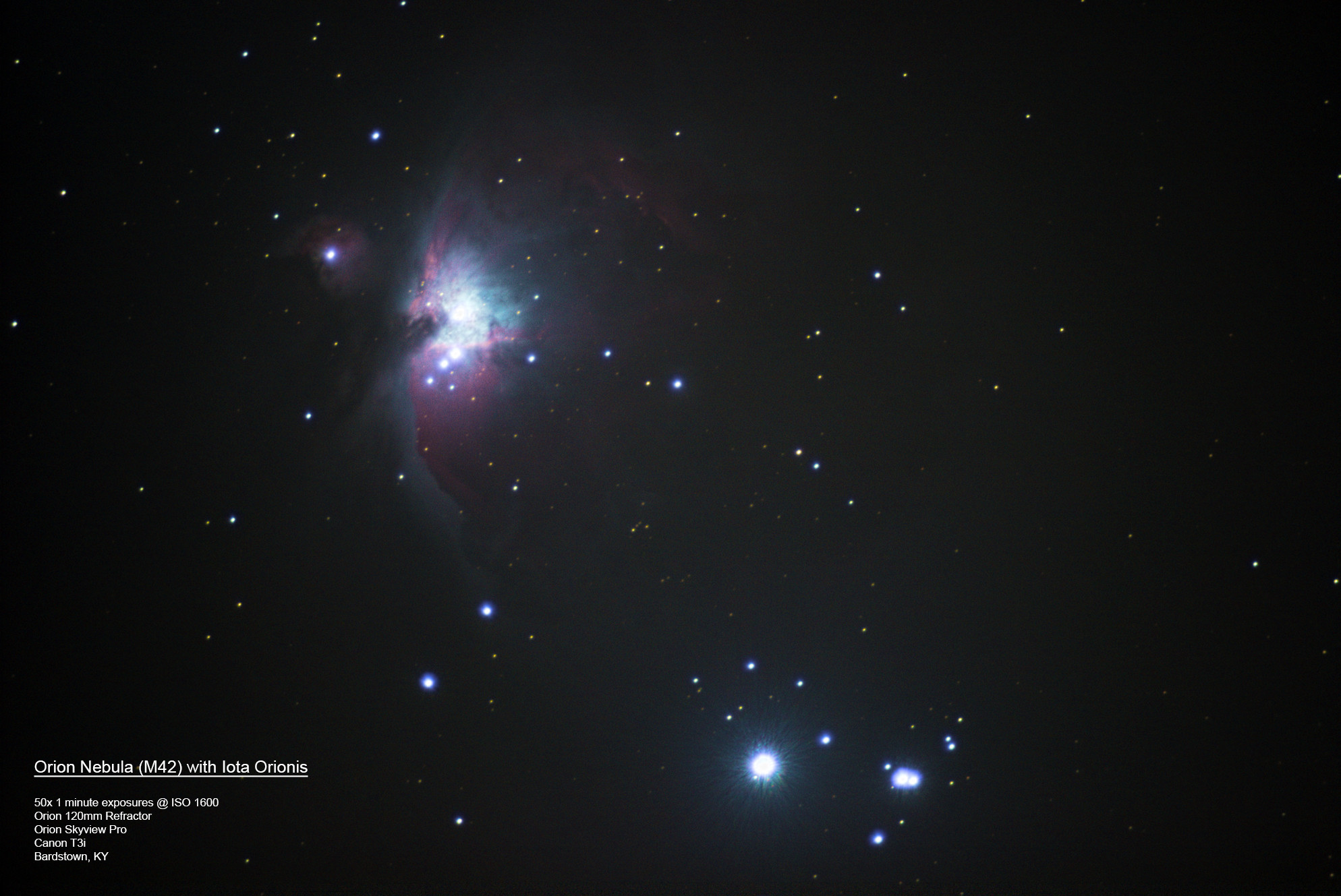HOME | DD
 RedXen — Orion Nebula with Iota Orionis
RedXen — Orion Nebula with Iota Orionis

Published: 2013-09-28 13:44:37 +0000 UTC; Views: 1659; Favourites: 26; Downloads: 18
Redirect to original
Description
Here's a combined 50x 1 minute exposure of the Orion Nebula with a half moon out, which was still extremely bright. There is some star trailing, as I'm still working on getting the polar alignment of the tracking mount as accurate as possible. I can't really do anything past 1.5~2 minute exposures without some new equipment. The bright star to the bottom right is Iota Orionis.Related content
Comments: 5

Nice pic, even with the moon in the back ground. I'm guessing you're not using a computer operated mount? How big is the telescope? Or are you just using a camera?
👍: 0 ⏩: 1

Nope, the Orion Skyview Pro mount I have does have dual axis motors and a controller for it but that is it. It's an extremely simply tracking mount. The telescope I've been using as an Orion 120mm (4"~) achromatic refractor, which is why you see some bad blue color fringing on bright stars. I have an Orion 6" reflector as well, but I can't get my DSLR to focus on it as the drawtube on the focuser isn't long enough for it not to mention that with a reflector having a DSLR hanging off the side throws off the center of gravity for the telescope.
👍: 0 ⏩: 0

Lovely image. Interesting that Iota is used to denote the smallest bit of, odd name for a double-star system (ironic application of the Greek-letter rules).
So that I understand the terminology--this is an overlay of 50 images? Could more, but shorter-exposure, images with image alignment before overlay lessen the trailing (or would it just eliminate the fainter stars)?
👍: 0 ⏩: 1

Yeah... that's just what the star is called lol. You're correct, this is a composite image of 50 one minute exposures. The thing with deep sky objects in Astrophotography is that a vast majority of nebulae, galaxies, etc... are all very dim, so long exposures (5~10+ minutes) are ideal because the chances of a photon coming from that specific object and hitting your camera sensor is remote on small time scales. The longer you keep the shutter open, the more light and detail you'll have a chance at collecting. Then, the other thing that you have to consider for long term exposures is the fact that the sky moves due to the earth rotating. So, to counter that you need a motorized telescope mount that counters the rotation and keeps the object you're shooting in view... but then the quality and accuracy of the mount really comes into play and a whole slew of other variables and issues come into play at that point.
👍: 0 ⏩: 0


























